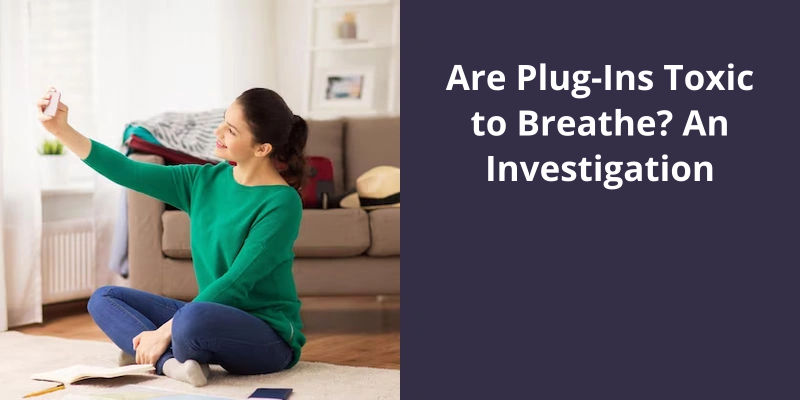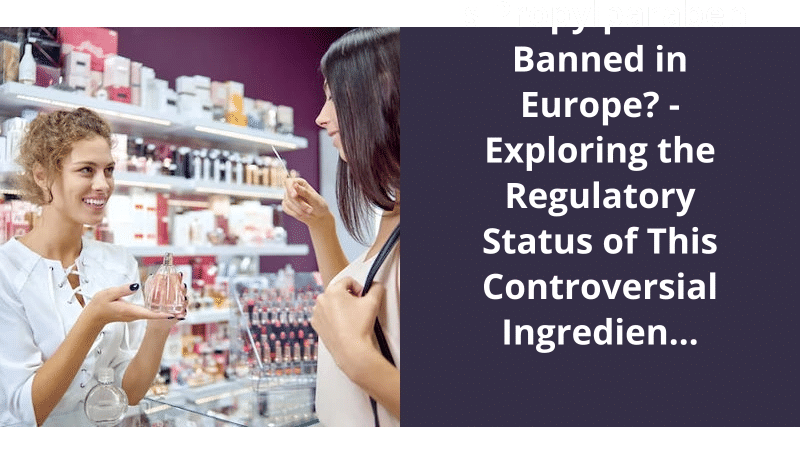Plug-ins, or plug-in air fresheners, can be potentially harmful to breathe, even though they are not typically classified as toxic. They often contain chemicals like phthalates and volatile organic compounds (VOCs) which can lead to various health issues like asthma, allergies or even nervous system disorders, especially when exposed over a long period of time. However, in most cases, short-term exposure is not usually harmful. It is good to remember that individual reactions to these chemicals can vary greatly, and symptoms could be more severe for those with pre-existing health conditions or allergies. Therefore, while not broadly classified as “toxic”, the use of plug-in air fresheners should be moderated especially in closed, unventilated spaces. Opting for natural alternatives like essential oils can be a safer option.

Are Plug in Air Fresheners Safe to Breathe?
Are plug-in air fresheners safe to breathe? This question has been a subject of concern for many individuals. One of the primary concerns surrounding plug-in air fresheners is the presence of formaldehyde, a known toxic substance. Formaldehyde has been linked to various health issues, including respiratory problems and even certain types of cancer. The inhalation of this chemical can cause significant harm to our bodies.
Laboratory studies conducted on rodents have shown that exposure to naphthalene can lead to tissue damage and even cancer in the lungs. While these studies aren’t directly applicable to humans, it’s plausible to assume that similar effects may occur in humans as well.
As these devices emit the fragrance, along with the chemicals, they may contribute to indoor air pollution, which could have adverse effects on our health. It’s crucial to note that the concentrations of these chemicals emitted by plug-in air fresheners may vary and depend on factors such as ventilation and usage. Nonetheless, the potential risks associated with the chemicals they release can’t be ignored.
To ensure a healthy indoor environment, it’s advisable to consider alternative methods for freshening the air in your home. Natural options such as opening windows to allow fresh air in, using essential oils, or utilizing houseplants known for their air purifying qualities, may be safer alternatives. Additionally, practicing good hygiene and maintaining a clean living environment can also contribute to improving indoor air quality.
While further research is needed to provide conclusive evidence on the safety of plug-in air fresheners, it’s prudent to prioritize the health and well-being of ourselves and our families. By understanding the potential risks associated with these devices, we can make informed decisions about the products we choose to bring into our homes.
The Potential Health Effects of Other Chemicals Present in Plug-in Air Fresheners, Such as Phthalates and Benzene.
- The potential health effects of other chemicals present in plug-in air fresheners, such as phthalates and benzene.
In recent years, there’s been growing concern over the potential health risks associated with scented oil plug-ins, along with other common household products like scented candles and air fresheners. These seemingly innocuous items often contain a plethora of synthetic chemicals that can pose significant risks to our well-being. Moreover, rather than effectively neutralizing unpleasant odors, these products predominantly operate by simply masking them. It’s crucial to understand the potential dangers lurking behind these seemingly delightful scents, as we delve into the implications of using scented oil plug-ins and how they might affect our health.
Are Scented Oil Plug-Ins Bad for You?
Are scented oil plug-ins bad for you? This question has become a topic of concern in recent years. Just like scented candles and air fresheners, plug-ins are often packed with synthetic chemicals that pose significant health risks. It’s important to note that these products simply mask odors, rather than neutralizing them.
These can include phthalates, which are often used as solvents and stabilizers, as well as hazardous volatile organic compounds (VOCs). Phthalates have been linked to hormonal disruptions and developmental issues, especially in children. VOCs, on the other hand, can contribute to poor indoor air quality and trigger respiratory problems.
In addition to phthalates and VOCs, the fragrances used in plug-ins can also be problematic. Companies often use proprietary blends to create their scents, making it difficult for consumers to know exactly what they’re exposed to. Some fragrance ingredients have been found to be allergenic, irritate the respiratory system, and even have potential carcinogenic effects.
Instead, opt for natural alternatives such as essential oils, which can be diffused with a water-based diffuser. Opening windows regularly and improving ventilation also helps to circulate fresh air and minimize the concentration of indoor pollutants.
The synthetic chemicals they contain can contribute to poor indoor air quality and trigger respiratory problems. By choosing natural alternatives and improving ventilation, it’s possible to create a fresher and healthier environment without relying on potentially toxic plug-ins.
While Febreze plug-ins don’t contain formaldehyde, it’s important to note that they’re still not classified as completely non-toxic due to the presence of other potentially harmful ingredients like 1,4-dioxane, which is known to be a carcinogen and considered toxic.
Is Febreze Plug in Non Toxic?
The question of whether Febreze plug-ins are toxic or non-toxic is important when considering the potential risks associated with using such air freshener products.
One such ingredient is 1,4-dioxane, which has been classified as a known carcinogen and is considered toxic to humans. This compound is often found in cleaning products and may also be present in Febreze plug-ins. It’s toxicity is attributed to it’s ability to readily penetrate the skin and respiratory system, posing potential risks to our health.
To make an informed decision about the usage of Febreze plug-ins, it’s advisable to consider alternative methods of improving indoor air quality, such as opening windows for natural ventilation, using houseplants to filter the air, or utilizing non-toxic air freshening options like essential oils or natural incense.
It’s worth mentioning that regulatory bodies and scientific studies often differ in their conclusions on the safety of various chemicals used in consumer products. As a result, it’s always recommended to stay informed and consult reputable sources for the most up-to-date information regarding the potential toxicity of specific products.
While the absence of formaldehyde is a positive aspect, the presence of other potentially harmful compounds warrants consideration and further investigation before deciding to use these products in ones home.
What Are the Potential Health Risks Associated With Using Air Freshener Products That Contain 1,4-Dioxane?
Air freshener products that contain 1,4-dioxane can pose potential health risks. 1,4-dioxane is a chemical compound that’s classified as a probable human carcinogen by the International Agency for Research on Cancer (IARC). It’s commonly used as a solvent or a stabilizer in various consumer products, including air fresheners.
When these air freshener products are used, 1,4-dioxane can be released into the air and inhaled. Inhalation of 1,4-dioxane has been linked to respiratory issues, such as irritation of the throat, nose, and lungs. Prolonged exposure to this chemical compound has also been associated with liver and kidney damage.
It’s important to note that the level of risk will depend on the concentration of 1,4-dioxane in the air freshener product and the duration and frequency of exposure. However, to minimize potential health risks, it’s advisable to choose air fresheners that are labeled as “1,4-dioxane-free” or opt for natural alternatives, such as essential oils or natural fragrances.
Source: 13 Best Non Toxic Air Fresheners For A Clean Home (2023)
Conclusion
In conclusion, the investigation into the toxicity of plug-in air fresheners reveals concerning evidence. The presence of formaldehyde, a known carcinogen, within these products poses a significant risk to human health, particularly in terms of respiratory damage and potential cancer development. While it’s important to note that rodent studies don’t directly translate to human effects, it’s plausible to assume that similar health hazards may be present for humans who inhale these toxic compounds. As such, caution should be exercised when using plug-in air fresheners, and alternative methods of air freshening should be considered to ensure the protection of our breathing environments and overall well-being.





